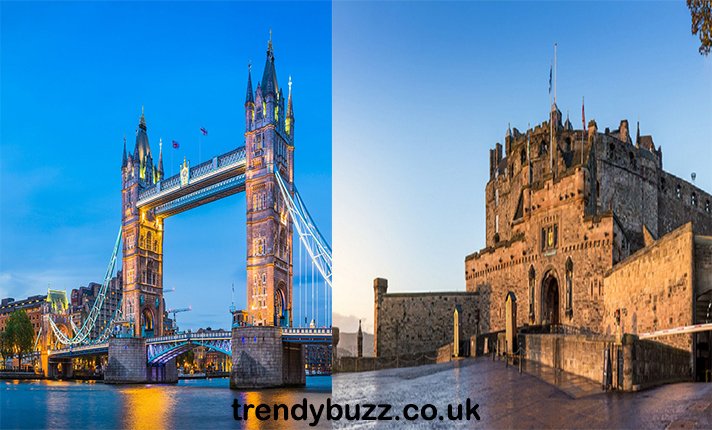Introduction
The United Kingdom packs centuries of history, dramatic landscapes and world-class museums into a relatively small space. Whether you want city museums and royal palaces, windswept national parks, or prehistoric monuments, the UK offers reliable, compact trips and big surprises. This guide walks through the most-loved attractions, practical tips for your visit, and why each place matters.
London: museums, history and the river
Start in London for the concentration of landmark sights. The British Museum remains the most visited free museum in the UK, drawing millions for its Egyptian, Greek and world collections.
Nearby, the Tower of London blends a dramatic riverside setting with centuries of royal history and is the most visited paid attraction in England. Booking ahead for timed entry will save you queuing time.
Other easy-to-reach highlights include the National Gallery, Tate Modern and the Southbank cultural area. Walk the Thames, take a river cruise if you like, and plan museum visits for morning or late afternoon when crowds thin. General visitor advice and official listings for England’s attractions are available from VisitBritain.
Stonehenge and the southwest
For a very different pace, head southwest to Stonehenge. The stone circle is managed by English Heritage, which runs the visitor centre, exhibitions and special access tours that let you approach the stones during designated times. If you want the classic experience, buy timed tickets in advance and expect a short walk from the visitor centre to the monument.
Pair Stonehenge with nearby sites in Wiltshire and Salisbury, or make a loop that includes Bath for its Roman baths and Georgian architecture.
Scotland: Edinburgh and the Highlands
Edinburgh Castle dominates the city skyline and provides a compact dose of Scottish history, plus great views over the Old Town. The broader city invites walking tours, the Royal Mile and seasonal festivals. Venture further north to the Highlands and islands for remote landscapes. The contrast between Edinburgh’s stone streets and the Highlands’ open spaces is one of Britain’s great travel pleasures.
National parks and natural landscapes
The UK’s national parks are surprisingly varied. The Lake District offers lakeside walks, classic villages and mountain ridges. The Peak District, Snowdonia in Wales and the Cairngorms in Scotland each have distinctive terrain and established walking routes. These parks are best enjoyed at a relaxed pace: pick one or two trails, bring weatherproof layers, and check transport options because public transport can be limited outside summer months.
Northern Ireland: Giant’s Causeway and coastal drives
Northern Ireland’s coastline delivers dramatic cliffs and the hexagonal columns of the Giant’s Causeway. Combine the Causeway with the scenic causeway coastal route and small towns; the approach by road is part of the pleasure.
Historic towns and university cities
Cities such as Oxford, Cambridge, York and Bath offer compact centers that are rich in architecture and museums, easy walking circuits, and atmospheric streets. These are great day trips from larger hubs or smart base towns if you prefer quieter evenings.
Practical tips for visiting
- Book the big-ticket items. For attractions such as the Tower of London, Stonehenge access tours and popular museum exhibitions, book timed-entry tickets in advance to avoid disappointment.
- Check opening hours by season. Many attractions extend hours in summer and run reduced timetables in winter. If you plan an off-season visit, confirm what facilities are open.
- Transport and passes. In cities, public transport and walking are usually easiest. For regional travel, trains and intercity buses work well, but car hire gives you more flexibility for national parks and coastal routes. Consider railcards or city tourist passes only if your itinerary covers several paid entries.
- Respect conservation rules. Many historic sites and natural landscapes have strict rules to protect fragile features. Follow signage, stick to paths and take litter home.
- Plan for weather. UK weather can change fast. Layered clothing, waterproofs and good walking shoes matter more than fashion when you head outdoors.
Why these attractions endure
Many of the UK’s top attractions succeed because they offer accessible stories about the past, well-maintained visitor services, and experiences that work for both first-time visitors and repeat travelers. Museums draw large numbers because their collections are broad and free. Historic sites like the Tower of London and Stonehenge offer narrative and spectacle, while national parks provide a physical contrast to urban life. Recent visitor surveys and official tallies show strong recoveries in footfall at major museums and parks, underscoring their central role in British tourism.
Suggested short itineraries
• Long weekend: London highlights (British Museum, Tower of London, Thames walk) plus a day trip to Windsor or Bath.
• Seven days: London, then train to Bath and Stonehenge, onward to the Cotswolds or a short flight to Edinburgh for two nights.
• Two weeks: London, Bath, the Cotswolds, north to the Lake District, finish with Edinburgh or Glasgow.
Final thoughts
The UK packs a lot into compact travel distances. If you focus on a region rather than trying to cover the whole country in one trip, you will get a deeper sense of place and less transit fatigue. Choose one or two major attractions and build slower, local experiences around them. For official visitor information and up-to-date figures, consult the national tourism site and individual attraction pages before you travel.
